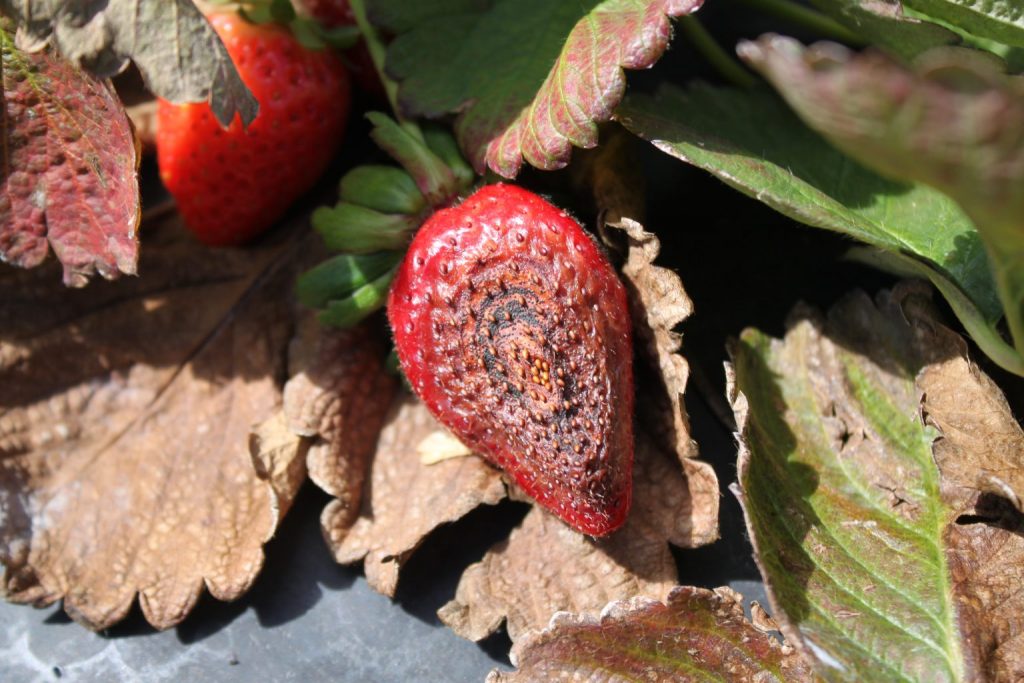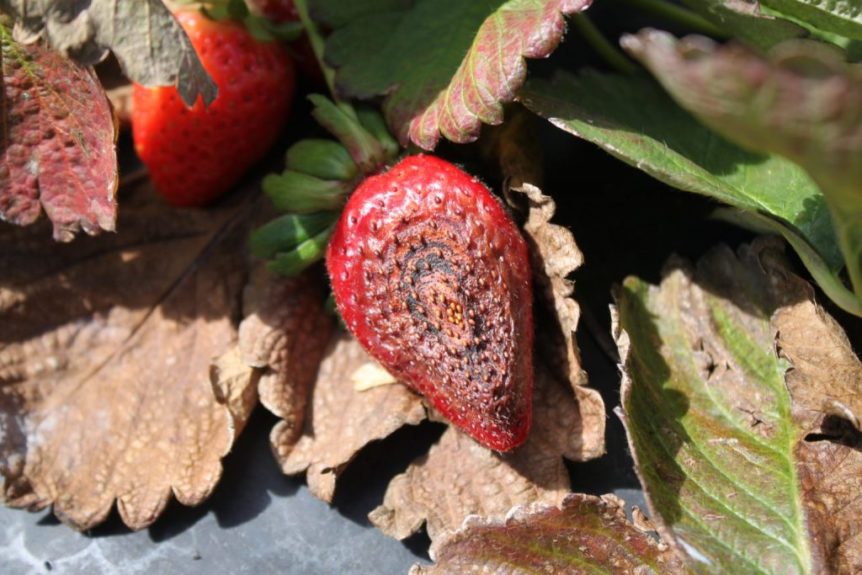
Strawberry diseases are devastating Georgia’s strawberry crop, which could lead to one of the worst production years ever, according to Phil Brannen, University of Georgia Cooperative Extension fruit disease specialist.
“Many strawberry sites are now suffering substantial plant mortality as the season progresses. Losses are not uniform, and some sites look pretty good. But unfortunately, many do not,” Brannen wrote in the UGA Strawberry Blog. “However, I hope that producers can still pull out some profits.”
Diseases instances have been widespread, though their causes have varied. Brannen said growers received sub-standard plants, and some were already showing early signs of disease — especially Phytophthora root rot and the aggressive strain of Neopestalotiopsis.
“Phytophthora root rot has been very prevalent, and I think there are three reasons for this; (1) early infections, possibly from transplants; (2) significant rainfall events that have increased pathogen spread (Phytophthora spores swim); and (3) likely mefenoxam (Ridomil) resistance in Phytophthora populations,” Brannen said. “When we have Phytophthora root rot, Ridomil is simply no longer working as well as it used to. Though I would still use it at this point, I would incorporate more of the phosphonate fungicides like Prophyt and others as the season progresses – not trusting Ridomil alone.”
Orondis cannot be utilized during harvest.
Neopestalotiopsis
Neopestalotiopsis is also very prevalent. While it was easy to discern two years ago which nurseries to avoid when purchasing plants, it is now difficult to say which nurseries may be “clean” and which are not.
“While it is at least possible that we are getting infection from carryover inoculum in fields that were previously planted to strawberry, I think nursery plants are still a main source of initial inoculum in many cases. With wet, warm/hot weather, we are also observing more Neopestalotiopsis as the season progresses,” Brannen added.
Recommendations for management of Neopestalotiopsis are as follows:
1) Avoidance through disease-free transplants – nursery source.
2) Avoid planting varieties that are highly susceptible.
3) Limit field operations, such as harvesting and spraying, when plants are wet.
4) Hand, shoe and clothing sanitation between fields.
5) Cleaning and disinfestation of equipment when moving between fields.
6) Remove and destroy symptomatic plants to reduce inoculum and disease spread.
7) Incorporate “efficacious” fungicides (Switch, Thiram, Rhyme, Tilt, Inspire) into the spray program.
Jeff Cook, University of Georgia Cooperative Extension agriculture and natural resources agent for Peach and Taylor counties, has suggested that growers could get better control with chemical fungicides if they use a flood nozzle that drenches the crowns. This sounds reasonable, and it can’t hurt.
For additional information on strawberry diseases and their management, please go to the IPM Guide located at www.smallfruits.org or download the MyIPM app. Your local county agent is also your first point of contact for any questions or issues you might have. They can help you with sending off samples for Phytophthora root rot confirmation and development of mefenoxam resistance, confirmation of the aggressive strain of Neopestalotiopsis, Botrytis fungicide resistance profiling with multiple fungicide classes, and resistance of the anthracnose fungus to QoI/strobilurin fungicides. Take advantage of these services. They are currently free till the money (grant funding) runs out.










